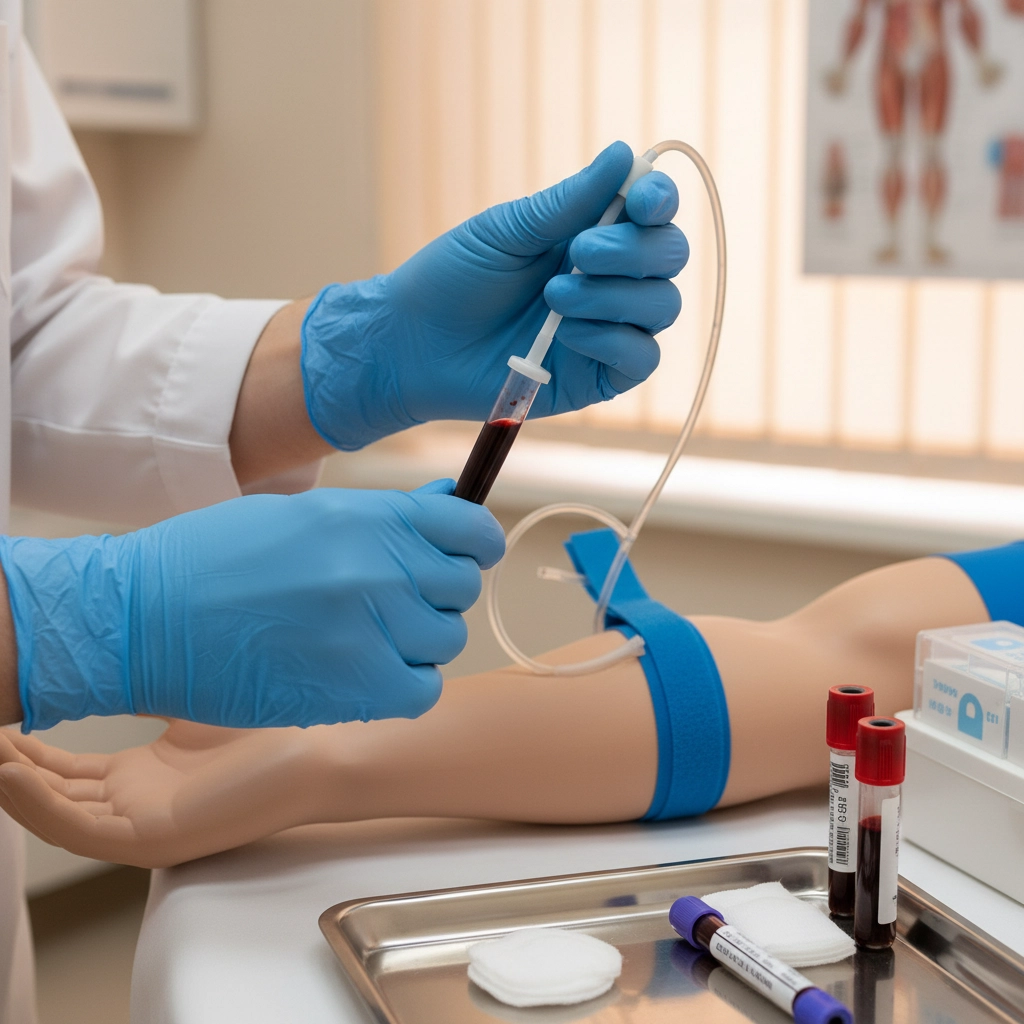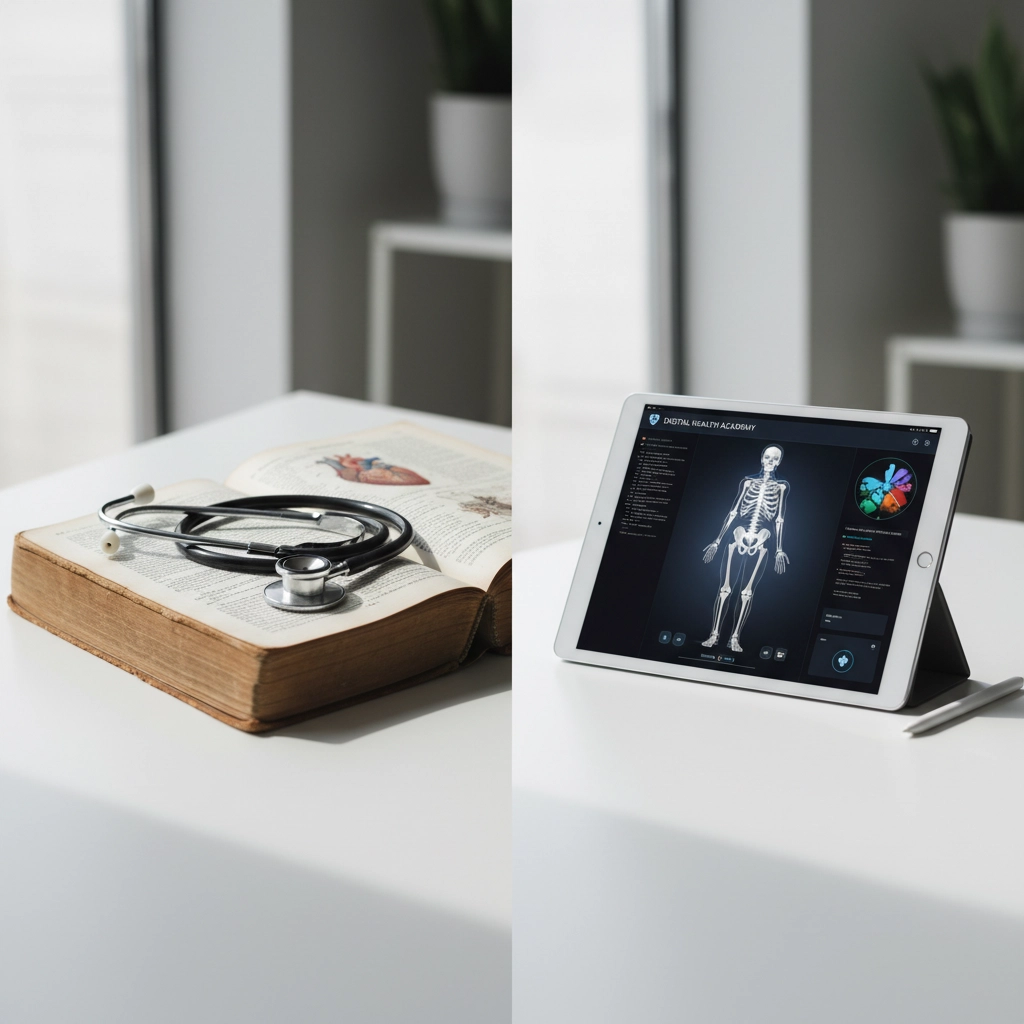Phlebotomy Technician Course Requirements Are Changing in 2026: Here's What You Need to Know
- Voodoo Vixens
- 4 days ago
- 5 min read
Ready to launch your healthcare career? The phlebotomy field is buzzing with exciting changes coming in 2026, and if you're considering this rewarding career path, now's the perfect time to get ahead of the curve!
The healthcare industry never stands still, and phlebotomy training is evolving faster than ever. Whether you're a career changer looking for stability or someone seeking an entry point into healthcare, understanding these upcoming shifts will give you a serious advantage in planning your educational journey.
What's Actually Changing in 2026?
The phlebotomy landscape is getting a major makeover, and it's all good news for aspiring technicians! Three big trends are reshaping how you'll train and certify:
Digital-First Training Options Are Exploding Gone are the days when you had to choose between work and school. 2026 brings expanded digital phlebotomy certification options that fit your busy life. Think hybrid programs, virtual labs, and flexible scheduling that actually works with your current commitments.
AI and Smart Technology Integration Training programs are getting smarter! AI-powered simulations and automated training tools are becoming standard, giving you more hands-on practice opportunities and personalized feedback. This means better preparation and higher success rates for everyone.
Nationwide Standardization Push Here's the game-changer: states are working toward unified certification requirements. This means your certification could have broader recognition and transferability – perfect if you're planning to move or want maximum career flexibility.

Current Requirements You Need to Master
Before we dive into what's changing, let's nail down what you need right now. Don't worry – these requirements are totally doable, even if you're starting from scratch!
The Basic Must-Haves
Age and Education: You'll need to be at least 18 years old with a high school diploma or GED. That's it for the basics – no previous medical experience required!
Background Check: A clean criminal background check is standard across most programs. This is about patient safety, and most minor issues won't disqualify you.
CPR Certification: Active CPR certification is typically required, but don't stress if you don't have it yet. Many programs include this in their curriculum or can direct you to quick certification options.
Training Duration That Actually Works
Here's where it gets exciting – phlebotomy training is designed for real life:
Standard Programs: 4-6 months for comprehensive training
Accelerated Fast-Track: As little as 4 weeks for intensive programs
Part-Time Options: Perfect for working professionals who need flexibility
The curriculum covers everything you need: patient safety, medical terminology, anatomy, physiology, and infection control. It's comprehensive but totally manageable with the right program.

Hands-On Clinical Requirements – The Real-World Experience
This is where theory meets practice, and it's honestly the most rewarding part of your training! Every certification pathway requires hands-on clinical experience because confidence comes from repetition.
The Numbers You Need to Hit:
Minimum 50 successful venipunctures (blood draws from veins)
At least 10 successful capillary punctures (fingersticks)
These aren't just arbitrary numbers – they're designed to ensure you're comfortable and confident with real patients. Most programs provide plenty of opportunities to exceed these minimums, so you'll graduate feeling truly prepared.
Three Pathways to Certification Success
The beauty of phlebotomy certification? There's a path that fits your situation, no matter where you're starting from.
Path 1: The Academic Route (Most Popular!)
Complete an approved phlebotomy course with at least 120 instructional hours within the past 4 years, plus your required clinical procedures. This is perfect if you want structured learning and comprehensive preparation.
Why Choose This Path:
Clear timeline and expectations
Built-in clinical opportunities
Networking with classmates and instructors
Direct pathway from education to certification
Path 2: The Experience Route (For Career Changers)
Already working in healthcare? You might qualify by working a minimum of 1,040 hours as a phlebotomy technician within the past 3 years (equivalent to 6 months full-time). This recognizes your existing skills and experience.
Perfect If You:
Have been working in a related healthcare role
Want to formalize your existing skills
Need certification for career advancement
Path 3: The Combined Route (Best of Both Worlds)
Complete 40 classroom hours plus 160 hours of guided work experience within the last 3 years. This hybrid approach combines focused education with practical experience.

State-Specific Considerations for 2026
Here's where those standardization efforts really matter! While requirements are becoming more uniform, some states still have unique regulations you need to know about.
High-Regulation States: California, for example, has additional requirements beyond national standards. Always verify your specific state requirements before enrolling in any program.
Interstate Practice: With standardization increasing, your certification will likely have broader recognition across state lines. This is huge for career flexibility and job opportunities!
Employer Preferences: Many healthcare employers are pushing for nationally recognized certifications, which means choosing the right program now sets you up for better job prospects later.
Preparing for 2026 Programs – Your Action Plan
Summer 2026 program admissions are opening soon, and smart planning now means better options and potentially lower costs. Here's your strategic approach:
Research and Compare Programs
Look for programs that are embracing the new digital training options while maintaining strong clinical partnerships. The best programs will offer:
Flexible scheduling options
Modern training technology
Strong clinical placement partnerships
Job placement assistance
Financial aid options
Financial Planning Made Simple
Phlebotomy training is one of the most affordable healthcare career paths, but planning ahead always helps:
Many programs offer payment plans
Financial aid is often available
Some employers offer tuition reimbursement
Training costs typically range from $800-$3,000

Technology Integration – What This Means for You
The integration of AI and automation isn't about replacing human skills – it's about making you better at what you do! Here's what to expect:
Enhanced Training Simulations: Practice difficult draws in virtual environments before working with real patients. This means more confidence and fewer mistakes when it counts.
Personalized Learning Paths: AI-powered programs can identify your strengths and areas for improvement, customizing your training experience for maximum success.
Automated Record Keeping: Digital systems make tracking your clinical hours and competencies easier and more accurate.
Career Outlook and Growth Opportunities
The timing couldn't be better for entering phlebotomy! Healthcare demand continues to grow, and phlebotomy technicians are essential to virtually every healthcare setting.
Where You'll Work:
Hospitals and clinics
Diagnostic laboratories
Blood banks and donation centers
Mobile healthcare services
Research facilities
Growth Potential: Many phlebotomists use their certification as a stepping stone to other healthcare careers, including medical assisting, laboratory technology, or nursing.

Making Your Move in 2026
Ready to take the next step? Here's your immediate action plan:
Research Programs Now: Don't wait until admissions open – start comparing options today
Get Your Prerequisites Ready: Ensure your high school diploma/GED is accessible and consider getting CPR certified
Plan Your Timeline: Decide if you want standard, accelerated, or part-time training
Prepare Financially: Look into payment options and potential financial aid
Connect with Programs: Many schools offer information sessions or campus tours
The phlebotomy field is evolving, and 2026 represents an exciting opportunity to enter healthcare with cutting-edge training and excellent career prospects. These changes aren't obstacles – they're opportunities to get better training, more flexibility, and stronger career prospects than ever before.
Your healthcare career is waiting, and with the right preparation and program choice, you'll be ready to make the most of everything 2026 has to offer. The question isn't whether you can succeed in phlebotomy – it's how quickly you want to get started!
Ready to explore your options? Visit Vixen Medical Academy to learn more about our comprehensive, flexible phlebotomy training programs designed for your success.



Comments